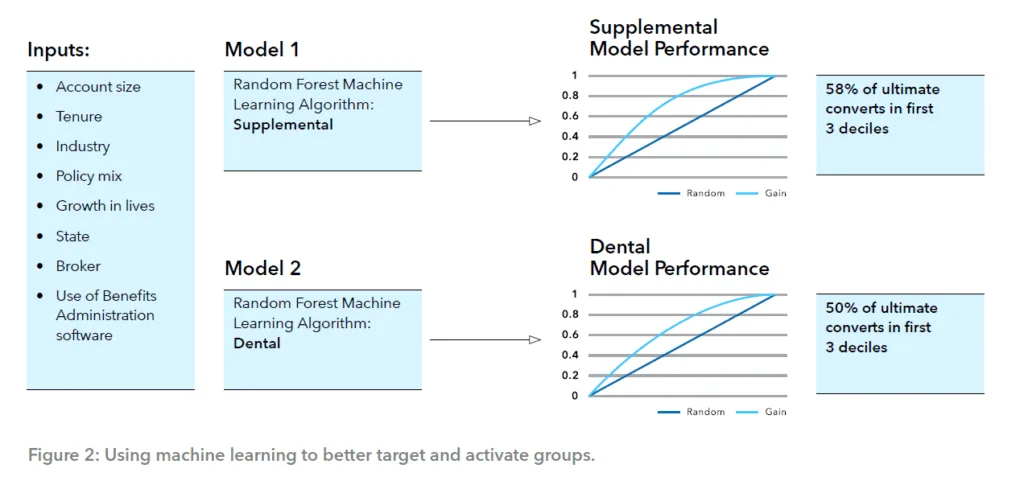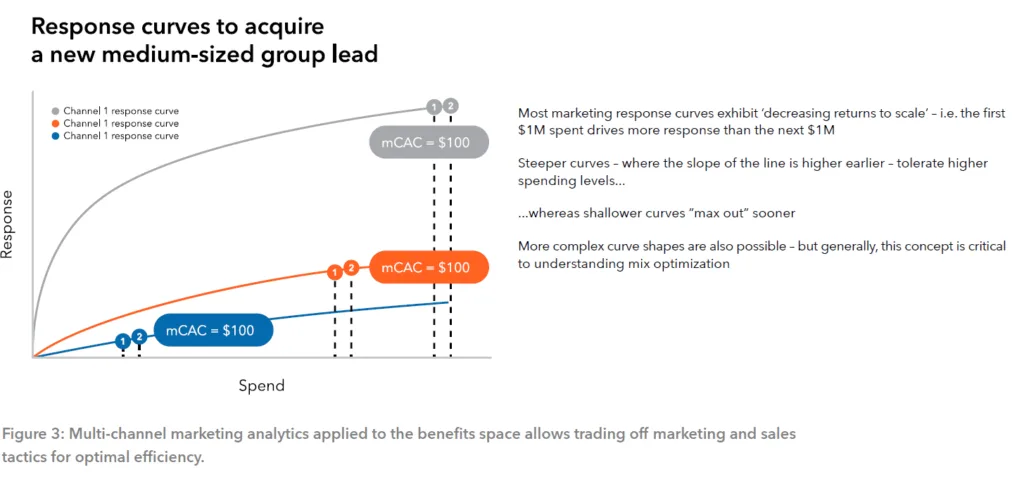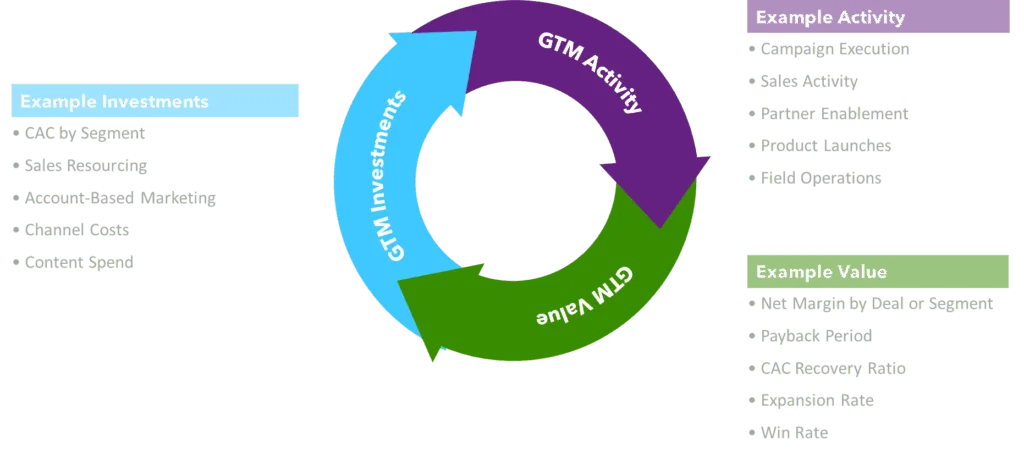Artificial intelligence is a tool that can unlock immense efficiencies within the employee benefits space. In this blog post, we discuss and provide examples for 3 areas of AI utilization within the employee benefits go-to-market space:
- AI for acceleration: using AI as an ad-hoc tool for employee productivity
- AI for insights: using AI to extract summary statistics from large sets of unstructured data
- AI for workflows: integrating AI directly as features of the product or service
However, despite the promises of productivity and scalability for employee benefits organizations, users of AI should not replace their human intuition or creativity with AI automation. Hallucinations still pose a large barrier to full-scale automation of workflows, while AI-generated content lacks the “human empathy” needed to generate trust and connect with human audiences. Therefore, the core use-case for AI today is as a tool to enhance one’s own productivity, but not as a replacement for creative minds and product builders.
AI for acceleration
Content and product creation is the core example of using gen AI to accelerate the go-to-market process.
- Streamlining Data Transfer: AI agents can automatically scan benefits enrollment and claims data and insert relevant qualitative details into each employee’s profile. We recommend the first step towards this implementation include efforts for building thorough and clean data for employee, lead, and account profiles which can be leveraged towards these AI-driven campaigns.
- Personalization at Scale: In the B2B go-to-market space, gen AI is being used to produce emails with hyper-targeted value propositions based on a lead’s personalized profile; AI models can ingest past email interactions with a sales lead and draft a personalized email for relevant benefit plans based on these past interactions.
Fundamentally, AI’s principal utility is the ability to offload the burden of rote repetitive tasks onto the computer, allowing the user to focus on optimizing marketing and sales efforts through creativity and insights.
AI for insights
Large language models (LLMs), and more specifically Retrieval Augmentation Generation (RAG) models, can automate the finding, ingestion, and summarization of large volumes of texts. Some examples include:
- Document Summaries: If desktop research has uncovered a 20-page document (e.g. quarterly financial reports), AI can now summarize those findings. A metric like employee headcount can be critical in estimating the growth of an account or value of a prospective client; and is easily summarized for each company through AI.
- Extraction From Unstructured Data: AI can also quickly generate summary statistics from a large database of first-party unstructured data. A RAG model can be used to answer questions like, “how often do our leads mention some form of retirement benefits in emails during the sales journey?” or “what are the most common questions asked during member service calls?”
The ability to generate such summaries and statistics allows analysts to focus on interpreting the numbers, instead of the manual labor of compiling them.
AI for workflows
The ability to embed AI agents in a network of connected software systems allows such AI agents themselves to become directly embedded into workflows of a product or service.
- Account-Based Marketing: AI agents can produce recommendations to optimize account-based marketing (ABM) campaigns. By scanning the entire ecosystem of accounts, leads, contacts, and opportunities, AI agents can rank accounts by likelihood to convert, renew, or churn. AI agents also can recommend messaging sequencing
- Concierge Services: AI agents can field and reply, in real-time, to questions asked by employees regarding benefits and aid in the selection of insurance plans and retirement contribution amounts. As well, AI agents can help members make enrollment changes during qualifying events, and even answer questions about what qualifies as a life event.
Implementations of such core features could become table stakes for employee benefits organizations in the near future.
Limitations of AI
Despite the vast potential advantages that AI holds, there are still potential weaknesses which must be understood and considered when utilizing AI’s services, including:
- Non-existent Sources: AI agents can sometimes cite non-existent and completely fabricated sources that sound like they should exist. This often happens when users ask leading questions to AI agents: “Why does Singapore have a larger GDP than the United States?” Our recommendation is to use AI to summarize information and then double-check the relevant sources.
- Plan Fabrication: If an enrollee is comparing benefits plans, an AI agent could fabricate plan details. For example, an enrollee might ask: “If I make $X each month, why is Plan A better than Plan B?”. In this instance, the AI agent might claim that: “Plan A is better because it is cheaper than Plan B” when Plan A is actually more expensive than Plan B. LLMs developed by mature AI organizations have found huge success in mitigating these kinds of logical reasoning errors, so our recommendation is to use a mature product offering from an industry leader, rather than a homegrown solution.
- Lack Of Human Empathy: AI-generated content (both text and images) often come with an “uncanny valley” effect; the content feels sterile, generic, and disconnected from a human audience. In fact, 91% of organizations with over $50 million in revenue do not feel prepared to implement AI with the necessary safety and responsibility (Mckinsey). Our recommendation is to use AI as a jumping off point, and have smart marketers customize the copy to make it real, human and effective.
Ultimately, AI agents generate what they believe the user wants to hear and not what is necessarily factually correct. AI’s untrustworthiness leaves it incapable of owning specific insight generation and workflows without oversight. Therefore, it is still imperative that users of AI do not rely on it for items which require critical thinking, though the employee benefits space can leverage this powerful tool for acceleration, workflow and the early stages of insights generation.
What other bold moves should benefits leaders make to compete in the coming decade?
















